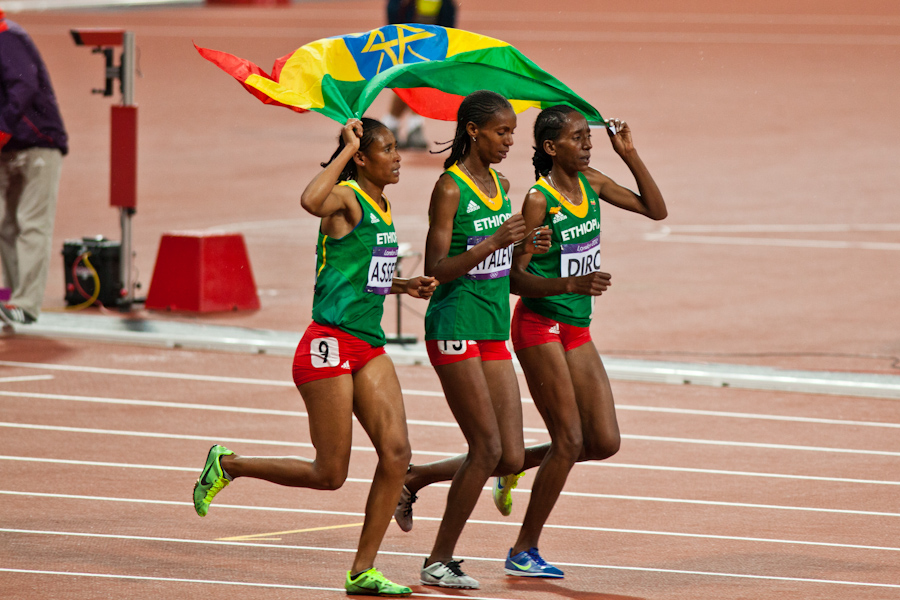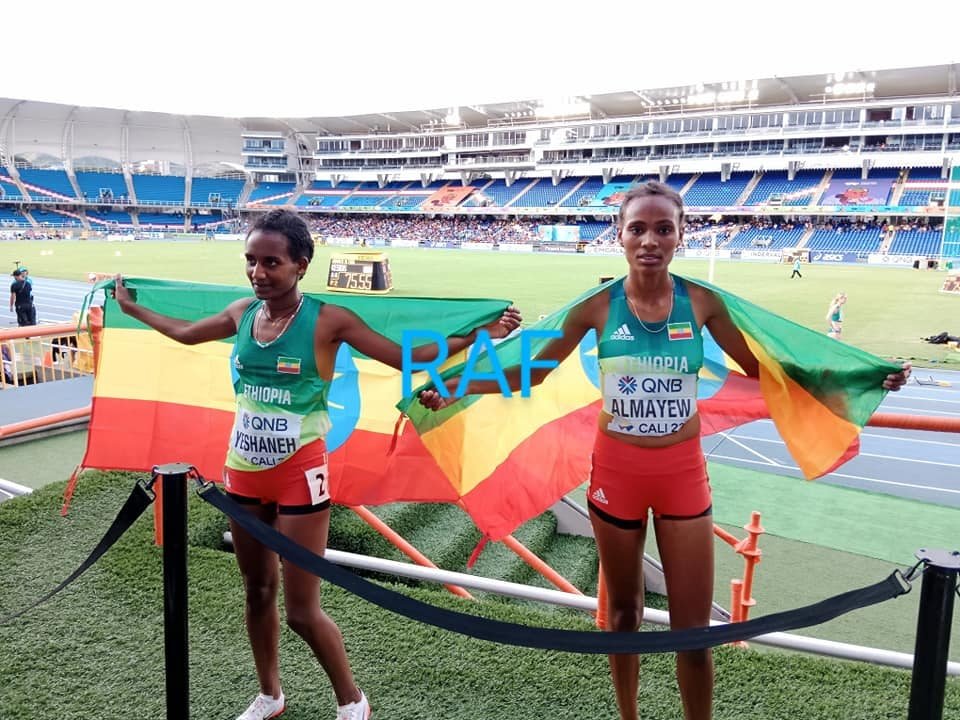History of Ethiopian Steeplechase Dominance

The Ethiopian steeplechase dominance is a recent phenomenon, exploding onto the global stage in the late 20th and early 21st centuries. This dominance is not a mere coincidence but a culmination of several factors, including a rich athletic heritage, strategic training methods, and a culture that emphasizes endurance and resilience.
Origins of Ethiopian Success, Ethiopian steeplechase
Ethiopia’s success in the steeplechase can be traced back to the country’s long tradition of long-distance running. For centuries, Ethiopians have participated in various forms of endurance running, including the traditional “Yebisa,” a long-distance race often held in mountainous terrain. This ingrained culture of endurance laid the foundation for the emergence of world-class steeplechasers. The 1960s saw the rise of Abebe Bikila, who famously won the marathon at the 1960 Rome Olympics barefoot. This victory ignited a national passion for distance running and inspired generations of athletes, including those who would later excel in the steeplechase.
- The 1980s saw the emergence of another Ethiopian legend, Haile Gebrselassie, who dominated the long-distance scene. Gebrselassie’s success inspired a new generation of Ethiopian athletes to pursue running, including the steeplechase.
- The 1990s witnessed the rise of the first generation of Ethiopian steeplechasers, with athletes like Gezahgne Abera and Moses Kiptanui making their mark on the global stage. These early pioneers helped establish Ethiopia’s reputation as a powerhouse in the event.
Training Methods and Strategies
Ethiopian athletes are renowned for their rigorous training methods, which emphasize high-volume running and altitude training. Their training programs often involve running at high altitudes, which helps them adapt to thinner air and improve their oxygen intake. This training regime, coupled with a natural predisposition for endurance, allows Ethiopian athletes to excel in events that require sustained effort, like the steeplechase.
- Ethiopian training methods often involve running on uneven terrain, mimicking the challenges of the steeplechase course. This helps develop strength, agility, and coordination, crucial for navigating the water jump and other obstacles.
- In contrast to other nations, Ethiopian athletes tend to focus on developing a strong aerobic base through high-volume running, rather than emphasizing speed work. This approach helps build endurance and stamina, essential for success in the steeplechase.
Cultural Factors
Ethiopian culture places a strong emphasis on endurance and resilience. These values are deeply ingrained in the national psyche, stemming from a history of hardship and struggle. This cultural ethos is reflected in the training methods and competitive spirit of Ethiopian athletes, who are known for their unwavering determination and ability to push their limits.
- The strong sense of community and support within the Ethiopian running scene further contributes to the success of its athletes. The camaraderie and shared goals among runners create a supportive environment where athletes can thrive and push each other to achieve greatness.
Ethiopian Steeplechase Techniques and Strategies

The dominance of Ethiopian athletes in the steeplechase is not merely a product of raw talent. Their success is intricately interwoven with unique running styles, water jump techniques, and strategic approaches that have consistently propelled them to the top of the podium.
Running Styles and Water Jump Techniques
Ethiopian steeplechasers are renowned for their distinctive running styles, characterized by a combination of speed, efficiency, and agility. Their long strides and powerful leg drive allow them to maintain a high pace throughout the race, while their upper body remains relatively relaxed, conserving energy. This efficient running style is particularly evident in the water jump, where Ethiopian athletes have developed a unique technique that minimizes energy loss. They approach the water jump with a controlled, forward-leaning posture, ensuring a smooth transition over the barrier. This technique allows them to maintain momentum and avoid the energy-sapping braking and acceleration that often plague other runners.
“Ethiopian runners have a very unique style. They are very efficient in their movements, and they seem to have a natural ability to run over the water jump without losing too much speed.” – *A renowned athletics coach*
Pacing Strategies and Tactical Approaches
Ethiopian steeplechasers often employ a calculated pacing strategy, balancing the need for a strong start with the preservation of energy for the later stages of the race. They typically begin the race at a moderate pace, allowing them to settle into a rhythm and conserve energy for the final laps. As the race progresses, they gradually increase their pace, using their superior stamina and tactical awareness to outmaneuver their opponents. This strategic approach allows them to control the race and dictate the pace, often forcing their rivals to chase them from behind.
Adapting Strategies to Race Conditions
Ethiopian athletes are adept at adapting their strategies to different race conditions and competition levels. In shorter races, they may adopt a more aggressive approach, pushing the pace from the outset. In longer races, they may opt for a more conservative strategy, focusing on maintaining a consistent pace and capitalizing on opportunities to make strategic moves. This adaptability, coupled with their innate talent and technical proficiency, has enabled Ethiopian steeplechasers to consistently achieve success at all levels of competition.
Impact of Ethiopian Steeplechase Success

The dominance of Ethiopian athletes in the steeplechase has profoundly shaped the global landscape of the event, leaving an indelible mark on training methods, competition levels, and the inspiration of aspiring athletes worldwide. This success has also fostered national pride and economic growth in Ethiopia, highlighting the multifaceted impact of athletic achievement.
Influence on Training Methods and Competition Levels
Ethiopian dominance in the steeplechase has significantly influenced training methods and competition levels globally. The success of Ethiopian athletes has spurred coaches and athletes worldwide to adopt and adapt training strategies that have proven effective in Ethiopia. This has led to a rise in the overall level of competition in the steeplechase, with athletes from diverse backgrounds pushing the boundaries of performance.
- Emphasis on Endurance and Hill Training: Ethiopian training programs emphasize endurance and hill training, reflecting the mountainous terrain of Ethiopia. This approach has been adopted by athletes and coaches globally, resulting in a greater focus on building stamina and strength for the demanding steeplechase course.
- Integration of Traditional Training Practices: Ethiopian training methods often incorporate traditional practices, such as running barefoot or using natural obstacles. These practices have influenced training approaches in other countries, adding a unique dimension to steeplechase preparation.
- Increased Competition Intensity: The emergence of Ethiopian athletes as formidable competitors has intensified competition in the steeplechase. This has pushed athletes to improve their performance and strive for higher levels of achievement, raising the overall standard of the event.
Inspiration for Young Athletes
The achievements of Ethiopian steeplechasers have inspired countless young athletes in Ethiopia and around the world. The success stories of athletes like Kenenisa Bekele, Saif Saaeed Shaheen, and Getaneh Moleke have served as powerful role models, demonstrating that with dedication and hard work, even athletes from developing countries can achieve global success.
- Empowerment and Aspiration: The success of Ethiopian athletes has empowered young athletes in Ethiopia and other developing countries to believe in their potential and pursue their dreams, regardless of their background or circumstances.
- Global Recognition of Talent: The global recognition of Ethiopian athletes has shed light on the immense talent pool that exists in developing countries, encouraging investment in athletic development and infrastructure.
- Breaking Down Barriers: Ethiopian steeplechasers have broken down barriers and challenged stereotypes, demonstrating that athletic success transcends geographical boundaries and socioeconomic backgrounds.
Social and Economic Implications
Ethiopian success in the steeplechase has had a profound impact on national pride and economic development. The achievements of Ethiopian athletes have instilled a sense of unity and national pride, uniting the country behind its sporting heroes. This success has also attracted international attention and investment, contributing to economic growth and development in Ethiopia.
- National Pride and Unity: Ethiopian steeplechase success has ignited a sense of national pride and unity, uniting the country behind its athletes and celebrating their achievements on the global stage.
- International Recognition and Investment: The global recognition of Ethiopian athletes has attracted international attention and investment in sports infrastructure and development programs, fostering economic growth and opportunities in Ethiopia.
- Inspiration for Development: The success stories of Ethiopian steeplechasers have inspired the development of youth sports programs and infrastructure in Ethiopia, providing opportunities for young athletes to pursue their dreams and contribute to national development.
The Ethiopian steeplechase tradition is a testament to the country’s rich athletic heritage, showcasing remarkable endurance and agility. While the athletes navigate the water obstacles with grace, a different kind of obstacle is faced by those seeking a comfortable and functional workspace: the need for a sturdy phone stand.
The leather phone stand chair offers a stylish solution, allowing users to seamlessly integrate their phone into their setup. Just as the Ethiopian steeplechase demands a balance of speed and precision, this innovative design prioritizes both comfort and functionality, creating a harmonious work environment.
Ethiopian steeplechase has a rich history, producing world-class athletes like the legendary Kenenisa Bekele. The recent lamecha girma injury update has cast a shadow over the sport, as Girma’s talent and potential were evident in his record-breaking performances. However, the depth of Ethiopian steeplechase talent is undeniable, and the future of this discipline remains bright, with new stars waiting to emerge.